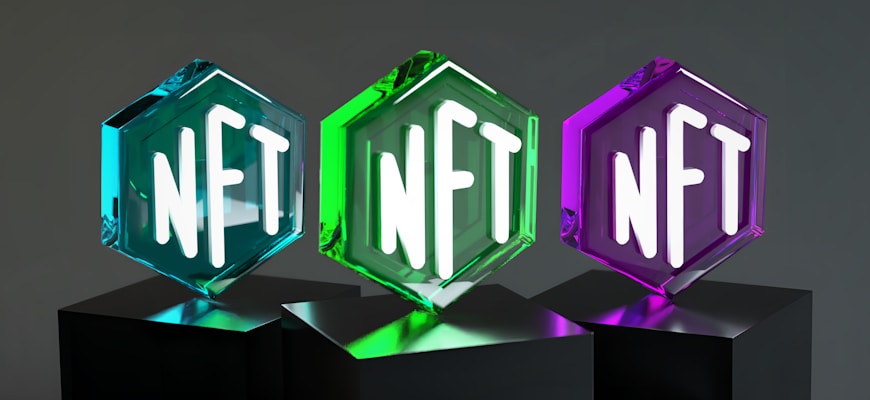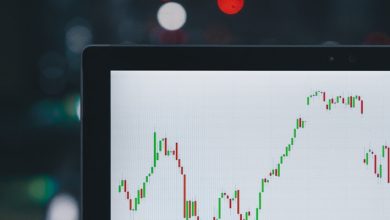How NFT Market Trends Are Influencing the Broader Crypto Space

- The Rise of NFTs: A Game-Changer in the Crypto Market
- Exploring the Intersection of NFTs and Traditional Cryptocurrencies
- NFTs: Redefining Value and Ownership in the Digital Age
- Impact of NFT Market Trends on Crypto Investment Strategies
- Evolving Ecosystem: NFTs and Their Ripple Effect in the Crypto Space
- Challenges and Opportunities: Navigating the NFT Landscape in Cryptocurrency
The Rise of NFTs: A Game-Changer in the Crypto Market
The rise of NFTs has been a game-changer in the crypto market, revolutionizing the way digital assets are bought, sold, and traded. NFTs, or non-fungible tokens, are unique digital tokens that represent ownership of a specific asset or piece of content. This uniqueness is what sets NFTs apart from other cryptocurrencies, as each token is one-of-a-kind and cannot be replicated or exchanged for an equivalent value like a bitcoin or ethereum.
NFTs have gained immense popularity in recent years, with artists, musicians, and other creators leveraging the technology to sell their work directly to fans and collectors. This has created a new revenue stream for creators, allowing them to monetize their digital art and creations in ways that were previously impossible. The ability to prove ownership and authenticity through blockchain technology has also made NFTs an attractive investment opportunity for collectors looking to diversify their portfolios.
As NFTs continue to gain traction in the market, they are influencing broader trends in the crypto space. The increasing demand for NFTs has driven up prices and created a new ecosystem of platforms and marketplaces dedicated to buying and selling these unique tokens. This has led to a surge in interest and investment in the broader crypto market, as investors look to capitalize on the potential for growth and innovation that NFTs represent.
Overall, the rise of NFTs has had a profound impact on the crypto market, opening up new possibilities for creators and collectors alike. As the technology continues to evolve and mature, it is likely that NFTs will play an even larger role in shaping the future of digital ownership and investment.
Exploring the Intersection of NFTs and Traditional Cryptocurrencies
The intersection of NFTs and traditional cryptocurrencies is an intriguing area that is gaining traction in the broader crypto space. NFTs, or non-fungible tokens, represent unique digital assets that are indivisible and cannot be exchanged on a like-for-like basis. This uniqueness has captured the attention of both creators and collectors, leading to a surge in NFT market trends.
One of the key ways in which NFTs are influencing the broader crypto space is through their integration with traditional cryptocurrencies. By accepting cryptocurrencies like Bitcoin and Ethereum as payment for NFTs, creators are expanding their reach and attracting a wider audience. This integration has also led to increased liquidity in the NFT market, as collectors can easily convert their traditional cryptocurrencies into NFTs.
Moreover, the use of blockchain technology in both NFTs and traditional cryptocurrencies has created synergies between the two markets. Blockchain technology ensures transparency and security in transactions, making it an ideal platform for both NFTs and traditional cryptocurrencies. This shared infrastructure has facilitated the seamless transfer of value between the two markets, further blurring the lines between them.
As NFT market trends continue to evolve, it is clear that the intersection of NFTs and traditional cryptocurrencies will play a significant role in shaping the future of the broader crypto space. By embracing this intersection and exploring the possibilities it offers, both creators and collectors stand to benefit from the unique opportunities that arise from this convergence.
NFTs: Redefining Value and Ownership in the Digital Age
NFTs are revolutionizing the concept of value and ownership in the digital age. These unique digital assets have gained significant traction in recent years, attracting a diverse range of investors and collectors. By leveraging blockchain technology, NFTs provide a secure and transparent way to verify ownership of digital content, such as art, music, and collectibles.
One of the key factors driving the popularity of NFTs is their ability to create scarcity and exclusivity in the digital realm. Unlike traditional digital assets that can be easily replicated, each NFT is one-of-a-kind and cannot be duplicated. This scarcity has led to a surge in demand for NFTs, with some pieces selling for millions of dollars.
The rise of NFTs has also had a profound impact on the broader crypto space. As more investors and creators flock to the NFT market, we are witnessing a shift in how value is perceived in the digital world. NFTs have opened up new possibilities for artists, musicians, and other creators to monetize their work directly, without relying on intermediaries.
Furthermore, NFTs have the potential to democratize ownership of digital assets, allowing anyone to buy, sell, and trade unique pieces of content. This has led to a democratization of the art world, with emerging artists gaining exposure and recognition through NFT platforms.
Overall, NFTs are reshaping the digital landscape, redefining notions of value and ownership in the digital age. As the market continues to evolve, it will be fascinating to see how NFTs continue to influence the broader crypto space and shape the future of digital ownership.
Impact of NFT Market Trends on Crypto Investment Strategies
The impact of NFT market trends on cryptocurrency investment strategies is becoming increasingly significant as non-fungible tokens gain popularity in the digital asset space. NFTs are unique digital assets that represent ownership of a specific item or piece of content, often stored on a blockchain. As NFTs continue to attract attention from collectors, artists, and investors, their influence on the broader crypto market cannot be overlooked.
One way in which NFT market trends are shaping crypto investment strategies is through diversification. Investors are recognizing the potential for NFTs to provide a new avenue for generating returns, outside of traditional cryptocurrencies like Bitcoin and Ethereum. By allocating a portion of their investment portfolio to NFTs, investors can hedge against market volatility and potentially benefit from the unique value propositions offered by these digital assets.
Additionally, NFT market trends are influencing the way in which investors assess risk and potential rewards in the crypto space. As the value of NFTs fluctuates based on factors such as scarcity, demand, and cultural relevance, investors must carefully consider the long-term viability of these assets before making investment decisions. By staying informed about NFT market trends and understanding the underlying factors driving price movements, investors can make more informed choices about where to allocate their capital.
Furthermore, NFT market trends are prompting investors to consider the broader implications of blockchain technology beyond just financial gain. NFTs have the potential to revolutionize industries such as art, gaming, and real estate by providing a secure and transparent way to buy, sell, and trade digital assets. As more industries adopt NFTs as a means of asset ownership and transfer, investors may look to capitalize on the growth opportunities presented by this emerging technology.
In conclusion, the impact of NFT market trends on crypto investment strategies is undeniable. As NFTs continue to reshape the digital asset landscape, investors must adapt their investment strategies to account for the unique opportunities and challenges presented by these assets. By staying informed, diversifying their portfolios, and carefully evaluating risk factors, investors can position themselves to benefit from the evolving intersection of NFTs and the broader crypto space.
Evolving Ecosystem: NFTs and Their Ripple Effect in the Crypto Space
NFTs have been making waves in the crypto space, reshaping the way digital assets are bought, sold, and traded. The impact of non-fungible tokens extends far beyond their own market, influencing the broader ecosystem in significant ways.
One of the most noticeable effects of NFTs on the crypto space is the increased interest and engagement they have generated among both new and experienced investors. The unique and collectible nature of NFTs has attracted a diverse range of individuals to the world of cryptocurrency, driving up overall market activity.
Furthermore, the rise of NFTs has led to a surge in innovation within the crypto space. Projects that incorporate NFT technology are pushing the boundaries of what is possible with blockchain, opening up new opportunities for creators, developers, and investors alike.
Another ripple effect of the NFT market trends is the growing integration of digital assets across different platforms and industries. NFTs are being used in sectors such as art, gaming, and even real estate, showcasing the versatility and potential of this technology beyond traditional cryptocurrency use cases.
As the NFT market continues to evolve, it will be fascinating to see how these digital assets shape the future of the broader crypto space. Their influence is undeniable, and their ripple effect is likely to be felt for years to come.
Challenges and Opportunities: Navigating the NFT Landscape in Cryptocurrency
As the NFT market continues to gain traction within the broader cryptocurrency space, there are both challenges and opportunities that investors and enthusiasts need to navigate. Understanding the landscape of NFTs is crucial for anyone looking to capitalize on this growing trend.
One of the main challenges in the NFT space is the issue of scalability. As more and more digital assets are tokenized as NFTs, the Ethereum network – which is currently the most popular platform for NFTs – is facing congestion and high gas fees. This can make it difficult for smaller investors to participate in the market.
Another challenge is the issue of copyright infringement. With the ease of minting NFTs, there is a risk of unauthorized use of intellectual property. This can lead to legal issues and damage the reputation of the NFT market as a whole.
On the other hand, there are also numerous opportunities in the NFT space. One of the biggest opportunities is the potential for artists and creators to monetize their work directly, without the need for intermediaries. This can lead to greater financial independence and creative freedom for artists.
Additionally, NFTs have the potential to revolutionize the way we think about ownership and authenticity in the digital age. By tokenizing unique digital assets, NFTs can provide a secure and transparent way to prove ownership of a piece of digital content.
In conclusion, navigating the NFT landscape in cryptocurrency requires a deep understanding of the challenges and opportunities that come with this emerging technology. By staying informed and being mindful of the risks involved, investors can position themselves to take advantage of the growing NFT market trends.



